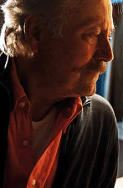
Parete Occupata
Astratto-Concreto
Since 2000, the overwhelming and 50-years artistic research of the master Calonaci, from his initial sculptural-architectural vocation to the graphic-pictorial works, finds a new appearance becoming completely pictorial. The geometric matrix of its three-dimensional shape it's mixed in a dialectic interaction with the two-dimensional space, stressed by the space of the canvas and its parietal continuity. The current work of Calonaci (2000/2017) consists of the substantial cycle of paintings named "Parete Occupata". This cycle is marked by an abstract-concrete language with which the artist tries to include the spatial context, the wall, inside of the work itself.
"Every painting of his new cycle - writes Crispolti - can be consider virtually as one possible work painted on the wall, since the continuity of white it would cancel the traditional perception of the size of the painting's shape itself". With "Parete Occupata" Calonaci intends to reconsider the relationship between the image and the space of its representation; a space that is not limited anymore to the definition and delimitation of the canvases space, but it gets rid in a sort of continuity, dialectical and expansive, between the painting and the wall. The space of painting enters the parietal context, occupies it in such a way as to undo its boundaries and setting it out, into a sort of "Environmental comparison", as suggested by Crispolti, in a continuity between the white spaces of the surface of the canvas and the wall occupied.
The expressive will of Calonaci is connoted by a formal nature of absolute formal simplicity. The pictorial work is a representation of abstract and concrete images that, although neatly arranged in the centre of a canvas, show an idea of Infinity, a "combination of ordered chaos and exemplification of complexity", just like poetically suggested by Nicola Micieli. Therefore, the white of the canvas pours itself in and is confused with the white of the wall that hosts it, becoming an integrated part of it. Consequently, the spatial context becomes included within the work itself.
Antonio Locafaro
Picture by: Giampiero Muzzi

